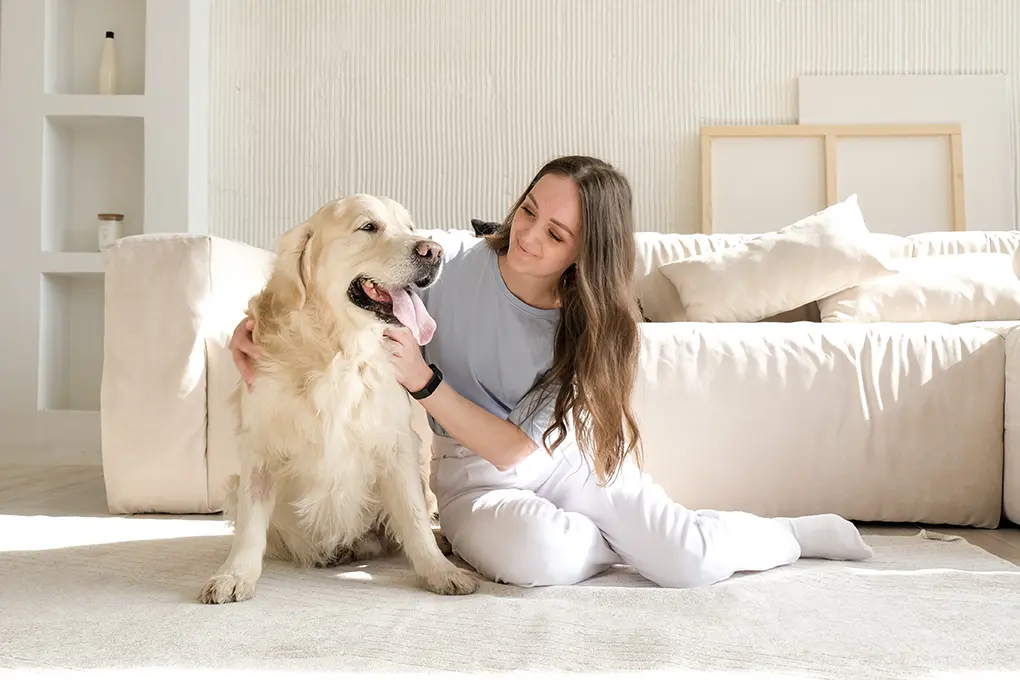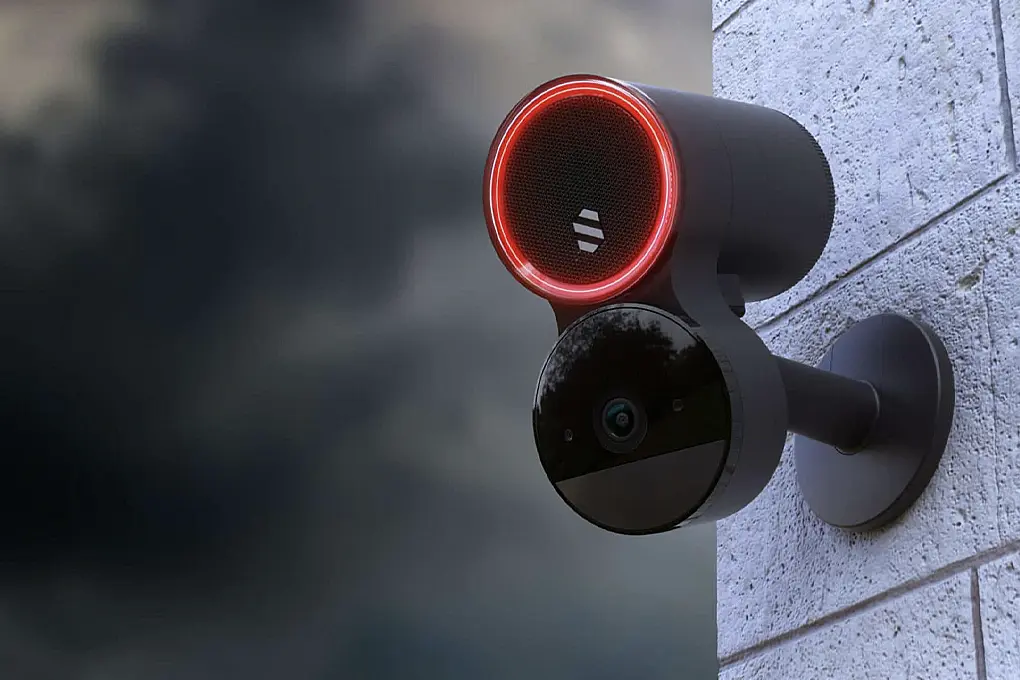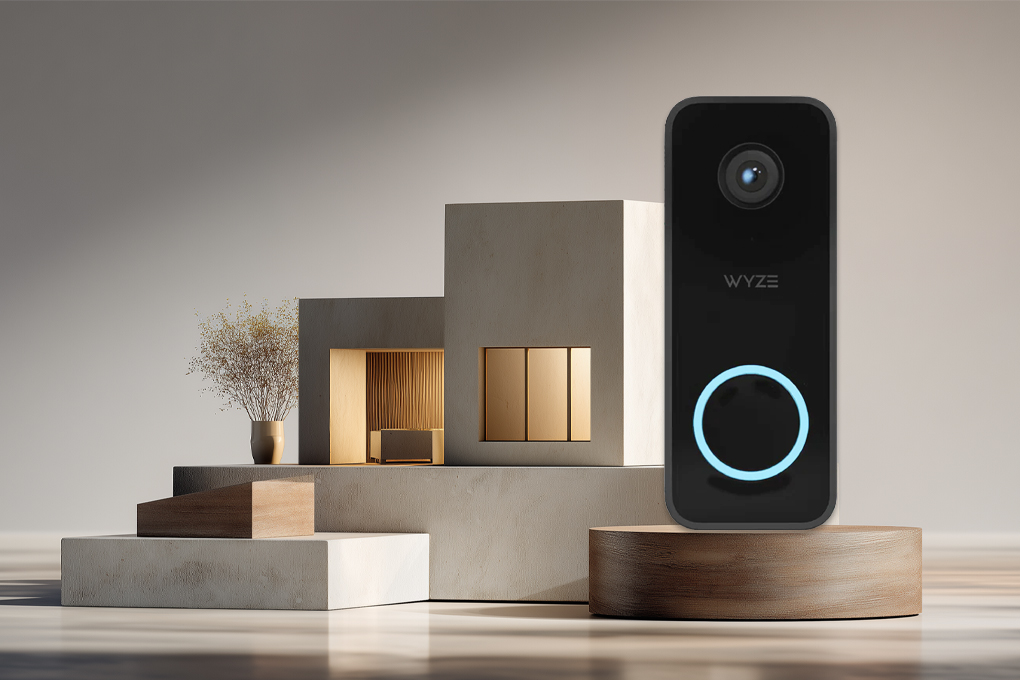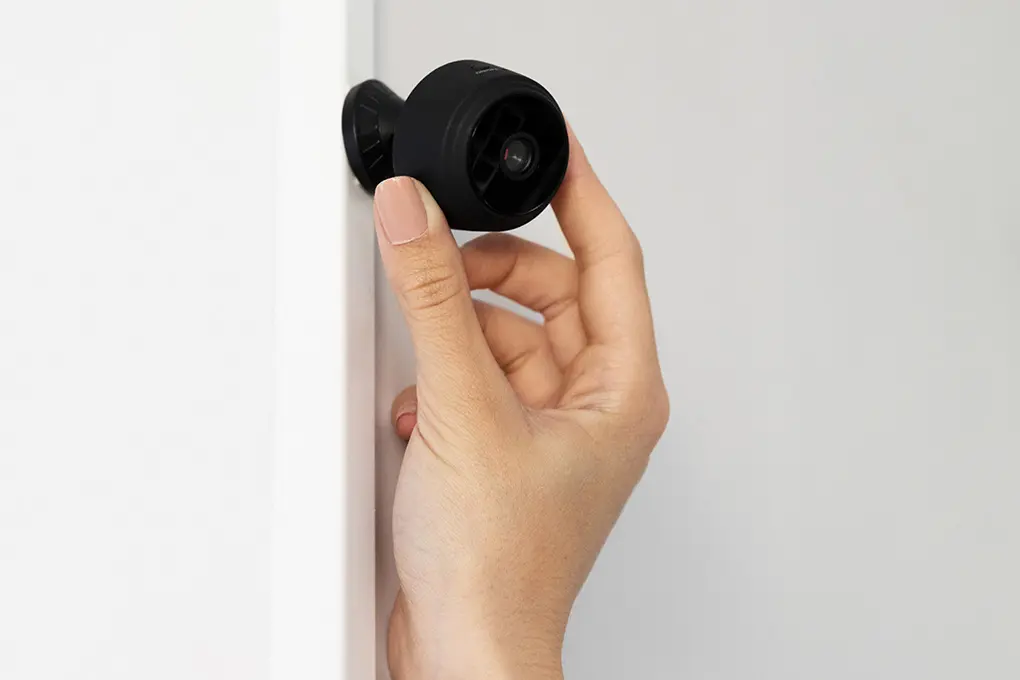Quick Answer: The best pet friendly home security systems in 2025 use motion sensors for homes with pets that can distinguish between animal and human movement. With features like AI recognition, dual-sensing technology, and customizable settings, these systems reduce false alarms, save money on fines, and keep both your home and pets safe.
If you share your home with pets, you already know how easily their late-night zoomies or curiosity around the living room can set things off.
What you may not realize is that a significant number of false alarms in the U.S. – nearly one in five, according to 2023 security industry data – are actually triggered by pets. That means many families are left juggling annoyed neighbors, potential fines, and a system they can’t fully trust.
The good news is that modern pet friendly security systems are built to solve exactly this problem. Instead of relying on crude adjustments like raising the height of sensors, today’s motion sensors for homes with pets use advanced technology to distinguish between a prowling cat and a genuine intruder.
By combining smart algorithms, dual-sensing tech, and video analytics, these systems let you protect your home while giving your four-legged companions the freedom to move safely and naturally.
Table of Contents
- Key Takeaways
- Pet-Immune Technology and Why Standard Systems Fall Short
- Top Pet-Friendly Security Systems for 2025
- Comparison of Top Pet-Friendly Security Systems in 2025
- Camera Considerations for Pet Households
- Advanced Motion Sensor Placement Strategies
- Alternative Technologies Beyond Traditional Motion Detection
- Breed-Specific and Multi-Pet Considerations
- Training Your Pets for Security System Success
- Cost Considerations and False Alarm Fines
- Understanding the True Cost of Pet-Friendly Security
- Professional Installation vs. DIY for Pet Owners
- Preparing Your Home for Installation
- Future Trends in Pet-Friendly Security
- Making Your Final Decision
- Taking Action for Your Pet-Friendly Home
- Frequently Asked Questions
- Sources
Key Takeaways
- Pet friendly home security systems in 2025 combine motion sensors for homes with pets, smart cameras, and AI tools to reduce false alarms while protecting your home.
- Traditional systems often trigger on pets, with nearly 18% of U.S. false alarms linked to animals, but pet-immune sensors can filter out movement by size, speed, and pattern.
- Top systems include SimpliSafe with precision sensors, Ring with smart integration, Abode with customization, and Vivint with professional setup.
- Camera considerations include indoor monitoring, outdoor protection, and budget options under $100 with features like motion zones and two-way audio.
- Advanced placement strategies such as corner mounting and pet alley zones significantly cut false alerts in multi-pet households.
- Cost savings come from avoiding fines, reducing equipment replacements, and earning insurance discounts, making pet-friendly systems a smart long-term investment.
- Browse Batten’s expert-tested recommendations to find a pet-friendly home security system tailored to your household.
Pet-Immune Technology and Why Standard Systems Fall Short
Traditional motion sensors struggle with pets, often mistaking them for intruders. Pet-immune technology changes how detection works by focusing on movement style, weight, and size rather than just heat.
Why Standard Motion Sensors Trigger on Pets
Basic motion sensors detect infrared radiation from warm bodies. To these sensors, an 80-pound Golden Retriever looks no different than a human.
When your dog runs through the living room, the system sounds an alarm, your phone fills with alerts, and the pet may panic at the noise they caused. Many owners end up disabling their sensors altogether, which undermines their security.
How Pet-Immune Sensors Work
Pet-immune sensors go beyond simple heat detection by analyzing mass, speed, and movement patterns. They can separate the upright motion of a human from the lower, horizontal movement of a pet. Some advanced versions use dual-technology sensors that pair passive infrared with microwave detection. With both needing to activate before triggering, false alarms drop dramatically while security remains intact.
Why Weight Ratings Matter
Weight limits are an important factor in choosing the right sensor. Most pet-immune models cover pets up to 40-50 pounds, enough for cats and small to medium dogs.
Larger breeds need sensors rated for 80-100 pounds to avoid constant false alerts. Selecting a system rated about 20 pounds above your pet’s actual weight gives extra protection, accounting for pets that jump on furniture, multiple animals moving together, or seasonal weight changes.
Top Pet-Friendly Security Systems for 2025
Finding a system that protects your home without constant false alarms caused by your pets can feel like a challenge. The following providers stand out in 2025 for their ability to balance strong protection with pet-immune technology.

SimpliSafe: The Versatile Choice for Multi-Pet Households
SimpliSafe continues to be a favorite among pet owners because of its simplicity, value, and proven reliability. Their motion sensors are precision-engineered to detect human heat signatures while ignoring pets up to 50 pounds.
In practice, we found that even with two medium-sized dogs moving freely, the system remained quiet while still alerting us when a person walked into the room.
What makes SimpliSafe especially appealing is the combination of adjustable sensitivity and professional guidance. Technicians or support staff can help identify ideal placement so sensors cover all entry points without being triggered by pets lounging on furniture.

The Secret Alerts feature adds another layer of flexibility, letting you receive quiet notifications if pets wander into off-limits spaces without sounding the siren.
Their new promotions make the system even more attractive: as of 2025, you can grab “The Starter” package (base station, keypad, three entry sensors, one motion sensor, plus a free indoor camera and wired doorbell) for around $141 with a monitoring plan.
Professional monitoring starts at $1.10 per day, backed by cellular connection, battery backup, and redundant monitoring centers.
During testing, the person-detection cameras filtered out our dogs’ movement perfectly, ensuring recordings focused only on human activity. Many of the pet owners we work with appreciate SimpliSafe’s flexible self-monitored security system option, which lets them verify alerts personally before escalating to emergency services.
Ring Alarm: Smart Integration for Connected Pet Parents
Ring Alarm is an excellent choice for pet owners who want security tightly integrated into their smart home.
Their second-generation motion detectors use PIR technology that can filter pets up to 55 pounds, but the real value comes from pairing them with Ring’s camera ecosystem. In daily use, this means that if the system sends a motion alert, you can instantly pull up a camera feed in the app to confirm if it’s just your cat jumping on the counter.
Ring’s adaptive learning impressed us during testing. The system began to recognize predictable patterns like a dog’s nightly patrol in the hallway and adjusted alerts accordingly. This cut down on unnecessary notifications while still detecting unusual activity. Their Modes feature also makes it easy to customize settings: relaxed when you’re home, more sensitive when you’re away, and fully armed overnight.
Ring also stands out for convenience. Alexa integration lets you check cameras, arm or disarm the system, or even call out to pets through two-way audio. At $20/month, Ring’s Professional Monitoring includes cellular backup and 60 days of video history – more than enough to review and fine-tune your system. In our tests, video verification through the app made it easy to distinguish pet motion from legitimate security concerns.
Abode: The Customization Champion
Abode may not have the name recognition of SimpliSafe or Ring, but its flexibility makes it a standout for pet households with unique needs.
Unlike many systems that apply the same settings across all motion sensors, Abode allows each sensor to be calibrated independently. During setup, we adjusted one sensor to account for a large dog in the living room while fine-tuning another for a smaller cat in the kitchen. The result was a highly accurate system tailored to our pets’ actual behavior.
Standard Abode sensors support pets up to 55 pounds, but the real power comes from their CUE automation platform. We tested scenarios where the system only triggered an alert if two different sensors detected motion within 30 seconds.

This dramatically reduced false alarms caused by pets while still catching human intruders moving across zones. Pet owners we spoke to reported false alarm reductions of more than 90% compared to basic motion detection.
Their Iota All-In-One Security Kit, starting at $200, includes a hub with HD video, built-in motion detection, and a 93 dB siren. The app is intuitive, letting you monitor pets and security events in real time.
Abode integrates with Alexa, Google Assistant, and Apple HomeKit, making it easy to build an all-in-one pet monitoring and security ecosystem. In practice, pairing Abode with pet cameras that dispense treats or offer two-way audio creates a complete solution for both safety and companionship.
Vivint: Professional-Grade Protection with Pet Considerations
Vivint takes a premium approach, offering professional installation and calibration as part of the package. During testing, their technicians demonstrated specialized placement and angling that made motion sensors far less likely to trigger on our pets.
Their standard sensors cover pets up to 40 pounds, but with technician adjustments, larger animals can be accommodated effectively.
The standout feature is Vivint’s AI-powered Outdoor Camera Pro. In real-world testing, the camera easily distinguished between a lounging cat on the porch and an unfamiliar visitor approaching the front door.
The Smart Sentry deterrent activated only when it detected a person, flashing its light and playing an audible warning while ignoring pets and wildlife.
Vivint also goes beyond intrusion detection. Their monitoring service, priced between $30-50/month, includes smart thermostat control and smart lock integration.
We found these features particularly helpful for households with pets, as they allowed remote temperature adjustments and secure access for dog walkers or pet sitters. Every entry is logged, so you always know who accessed your home. Vivint isn’t the cheapest, but it delivers peace of mind with its combination of AI-driven accuracy and professional support.
Comparison of Top Pet-Friendly Security Systems in 2025
| System | Pet Weight Limit | Monitoring Cost (per month) | Standout Features for Pet Owners |
| SimpliSafe | Up to 50 lbs (adjustable sensitivity) | From $1.10/day (~$33) | Secret Alerts to monitor pet zones quietly, precision-engineered motion sensors, professional placement support, person detection cameras, affordable starter kit with free indoor camera and doorbell |
| Ring Alarm | Up to 55 lbs | $20 | Integrated with Ring cameras for instant verification, adaptive learning of pet routines, customizable Modes, Alexa voice integration with two-way audio for pets, 60 days of video storage |
| Abode | Up to 55 lbs (per sensor calibration) | From <$1/day (optional) | CUE automation to reduce false alarms by 90%, independent sensor calibration, Iota Hub with built-in camera and siren, extensive smart home integrations (HomeKit, Alexa, Google) |
| Vivint | Standard up to 40 lbs, larger pets supported with pro setup | $30-50 | Professional installation and calibration, AI-powered Outdoor Camera Pro with Smart Sentry deterrents, smart thermostat and lock integration, reliable monitoring and logs for pet sitters/dog walkers |
Camera Considerations for Pet Households
While motion sensors form the foundation of a pet-friendly security system, cameras provide essential verification and peace of mind. Modern cameras now include features tailored for homes with animals, such as two-way audio to comfort pets and AI-powered detection that filters out normal pet activity from genuine threats. Both indoor and outdoor cameras can complement your motion sensor setup and help maintain balanced protection.
Indoor Camera Benefits
Indoor cameras serve dual purposes for pet households: home security and pet monitoring. To maximize their effectiveness, position them to cover entry points as well as your pets’ favorite hangout spots. Wide-angle lenses reduce the need for multiple devices, lowering costs and minimizing the chance of false alerts. Advanced smart cameras can even recognize specific pets, learning their behavior patterns and allowing owners to track activity throughout the day.
Outdoor Camera Advantages
Outdoor cameras add another layer of protection while keeping an eye on pets in the yard. Look for models with motion zones that can ignore ground-level activity from pets but remain responsive to human-sized movement. Features like night vision, weather resistance, and AI object detection ensure reliable performance without frequent false alerts caused by animals moving outside.
Budget-Friendly Options
Households on a budget don’t need to compromise. Many reliable security cameras under $100 now offer pet-friendly features such as person detection, two-way audio, and customizable motion zones. These allow you to block out pet play areas from triggering alerts while still receiving accurate notifications when human activity is detected.
Advanced Motion Sensor Placement Strategies
Motion sensor placement is just as important as the technology itself. While the standard recommendation of mounting sensors 7-8 feet high helps, placement strategy can dramatically reduce false alarms and maintain strong security.
Corner Mounting for Optimal Coverage
Mounting sensors in corners provides broader room coverage while naturally favoring upright human movement over lower pet activity. Sensors should ideally face across rooms rather than toward couches, beds, or pet play zones where animals frequently rest or move.
Creating Pet Alley Zones
A particularly effective method is creating “pet alleys.” By aligning detection zones to capture only human-height movement while leaving lower areas unmonitored, you allow pets to move freely without triggering alarms. This setup works especially well in hallways, stairwells, and open-plan spaces where vertical separation is clear.
Adapting to Unique Pet Behaviors
Tailor sensor placement to your pets’ habits. For cats that climb bookshelves, avoid pointing sensors at tall furniture. For energetic dogs that jump onto sofas, angle sensors slightly upward to catch human movement while ignoring sudden bursts of activity at lower levels. These small adjustments can significantly reduce false alarms while maintaining reliable detection.
Alternative Technologies Beyond Traditional Motion Detection
Motion detection is vital, but combining it with other technologies strengthens protection for pet households.
Glass Break Sensors
Glass break sensors add targeted protection by listening for the specific frequency of shattering glass. Because they ignore movement and common pet noises, they offer intrusion detection without risk of false alarms from animals. Newer models can even distinguish between glass breaking and sounds like dishware clattering.
Door and Window Sensors
Door and window contact sensors remain one of the most pet-friendly solutions. They activate only when entry points are opened, making them immune to pets’ everyday activity. Many households with large or multiple pets find that relying heavily on contact sensors with carefully placed motion detectors provides the best balance of reliability and convenience.
Smart Home Integration
Smart home technology expands options further. Environmental sensors that detect smoke, carbon monoxide, or water leaks protect your home from non-intrusion threats without being influenced by pets. Some advanced systems now incorporate sound recognition, distinguishing between noises such as breaking glass or forced entry while filtering out barking, scratching, or meowing.
Breed-Specific and Multi-Pet Considerations
Different pets bring unique challenges for security systems, and understanding these factors helps owners choose the right equipment.
Breed-Specific Challenges
Large, dark-coated dogs absorb and emit more infrared radiation, which makes them more likely to trigger standard PIR (passive infrared) sensors even when under weight limits.
Breeds with thick coats, such as Huskies or Saint Bernards, may also appear as larger heat signatures than their true size.
These variations can cause false alarms unless sensors are carefully calibrated. Systems with dual-technology motion detection or AI filtering are often better for households with larger breeds.
Multi-Pet Households
Two medium dogs playing together can confuse pet-immune sensors, especially if they jump or move quickly. For example, two 30-pound dogs wrestling may appear as an 80-pound mass, exceeding the limits of most sensors. In these cases, it is best to choose sensors rated for at least double your heaviest pet’s weight.
Another option is zone-based detection, which requires multiple trigger points before sounding an alert. Advanced systems can even recognize the difference between group pet movement and human intrusion, reducing unnecessary alarms.
Exotic Pets
Birds, rabbits, or reptiles present their own challenges. Birds flying around rooms often trigger ceiling-mounted PIR sensors, while heat lamps for reptiles can interfere with infrared detection. Rabbits moving quickly across the floor may appear as small intrusions.
For these households, camera-based systems with customizable AI are often more reliable than traditional sensors. Some Eufy alternatives now include pet-specific AI recognition, allowing the system to ignore activity from exotic pets while still monitoring for human movement.
Training Your Pets for Security System Success
Technology can handle most false alarm issues, but basic pet training makes any system more effective. Training helps create predictable routines and reduces unexpected movements that might confuse sensors.
Essential Training Steps for Security System Harmony
- Desensitization to System Sounds: Gradually exposing pets to alarm sounds prevents panic and stress. Start by playing low-volume alarm tones during calm moments, rewarding relaxed behavior with treats. Slowly increase volume over several weeks. You can also practice “alarm drills” where the system is armed and sounds briefly, while you stay calm to reassure your pet. Never use alarms as punishment.
- Creating and Maintaining Pet-Safe Zones: Designating specific areas where pets can move freely without triggering sensors is a highly effective strategy. Choose rooms with few entry points, use baby gates to set boundaries, and place essentials like beds, toys, and water there. Motion sensors should be installed only in human-traffic areas outside these zones. Smart locks or self-closing doors can also help maintain boundaries consistently.
- Behavioral Modifications That Help: Simple commands and routines reinforce system effectiveness. Teaching a “place” command ensures pets stay calm when the system is armed. Establishing quiet times where pets settle down can cut down on excessive movement. Consistently discouraging jumping on furniture prevents accidental triggers from motion sensors. Rewarding calm behavior during your departure routine helps pets associate your leaving with positive experiences, such as receiving a special toy or treat.
This combination of training and technology ensures security systems run smoothly without compromising pet comfort. Over time, pets adapt to system cues, creating a balanced environment where protection and peace of mind coexist.
Cost Considerations and False Alarm Fines
False alarms remain one of the most overlooked costs in home security. Many municipalities issue escalating fines for repeated incidents, beginning around $50 for a second offense and climbing as high as $500 for chronic offenders. Investing in pet-friendly technology often pays for itself by preventing these unnecessary penalties.
Understanding the True Cost of Pet-Friendly Security
The cost of ownership extends beyond the price of equipment. A closer look at expenses reveals where savings occur over time.
Initial Investment vs. Long-Term Savings
| Cost Factor | Standard System | Pet-Friendly System | Potential Savings |
| Equipment Cost | $150-300 | $230-400 | -$80 to -100 |
| Monthly Monitoring | $15-25 | $20-30 | -$5/month |
| False Alarm Fines (Year 1) | $200-800 average | $0-100 average | +$100-700 |
| Insurance Discount | 5-10% | 10-20% | +$100-300/year |
| Equipment Replacements | Often needed | Rarely needed | +$150-300 |
| Total First Year Impact | $565-1,425 | $470-830 | +$95-595 |
Professional monitoring with video verification typically costs $10-20 more per month than basic packages, but these services reduce dispatches from false alarms and the fines that follow. Insurance companies often reward homeowners who use professionally monitored, verified systems with additional policy discounts, offsetting monthly costs.
It is also important to plan for the future. A kitten or small puppy will grow quickly, and many families eventually add another pet. Choosing a system with adjustable sensors and expandable capacity avoids expensive replacements later, saving hundreds over the system’s lifetime.
Professional Installation vs. DIY for Pet Owners
Installation quality directly affects how pet-friendly a system performs. Professional installers receive training in sensor placement and calibration for pet households.

Experts can spot problem areas unique to your home layout and your pets’ habits that owners may overlook.
DIY systems, however, offer flexibility. Because you know your pets best, self-installation allows for tailored placement that reflects actual movement patterns rather than general guidelines. It also makes it easier to test, adjust, and fine-tune sensor positioning over time.
Hybrid solutions are growing in popularity. Some companies now provide virtual installation support, where experts guide you through setup via video chat. This approach combines professional insight with hands-on customization at a lower cost than full installation.
Preparing Your Home for Installation
Preparation improves accuracy and reduces frustrations during setup. Spend a week tracking your pets’ routines: where they sleep, play, and roam at different times of day. This behavioral map ensures sensors are placed in ways that avoid pet-heavy areas while still covering entry points.
A 2023 study from the University of North Carolina’s Department of Criminal Justice found that visible security systems deter 60% of burglars. When combined with proper exterior lighting and maintained landscaping, deterrence rises to 83%. These findings show that pet-friendly systems work best when paired with thoughtful environmental design.
Finally, make sure all household members understand how to use the system. Create a quick guide with instructions for modes when pets are home alone versus when everyone is away. Clear communication prevents accidental triggers and helps the family adapt to pet-friendly settings smoothly.
Future Trends in Pet-Friendly Security

Pet-friendly home security is evolving rapidly, with artificial intelligence and smart devices creating new ways to balance safety with pet comfort.
AI-Powered Pet Recognition
Artificial intelligence is already transforming false alarm prevention. Emerging systems can now learn the unique profiles of individual pets, tracking multiple animals in a household and alerting only when an unfamiliar animal appears.
Early testing from major manufacturers shows promise in reducing false alarms to nearly zero. Some of these systems also incorporate wellness features, monitoring activity levels to alert owners to unusual patterns that could indicate stress or illness.
Integration with Pet Wearables
Smart collars and pet wearables are also becoming part of home security. These devices can communicate directly with security hubs, providing real-time location data for pets.
This allows the system to adjust motion sensor sensitivity based on where your pets actually are. Some prototypes go further, using biometric data such as heart rate or activity levels to detect signs of injury or illness. In addition to boosting security, this creates a dual function for pet health monitoring.
Voice and Sound Recognition
Another emerging technology is voice recognition tuned specifically for animal sounds.
Developers are experimenting with systems that recognize the difference between playful barking, whining, and alert barking. Imagine a system that can learn your dog’s “stranger bark” and treat it as a security event while ignoring the daily excitement of greeting the mail carrier.
This could shift pets from being common false alarm triggers to active contributors to home protection.
Expanded Ecosystem Integration
Future pet-friendly security will also tie into broader smart home ecosystems. Systems that integrate with automatic feeders, climate control, or pet doors will allow owners to not only secure their home but also manage pet routines remotely.
Insurance companies are beginning to take note as well, with some exploring policy discounts for homes that use AI-driven, pet-friendly systems with verified monitoring.
Making Your Final Decision
Choosing the right pet-friendly security system requires balancing your home’s security needs, your pets’ behavior, and your budget. Start with an honest assessment of your pets’ activity patterns, then select systems with weight ratings and features that match.
A gradual approach often works best. Many modern systems allow you to start with essentials, such as motion sensors, door and window contacts, and cameras, then add more advanced features like AI recognition or pet wearables later. This spreads costs over time and ensures every addition improves the system rather than complicating it.
The peace of mind that comes from reliable protection without constant false alarms makes pet-friendly systems a worthwhile investment. With the right combination of smart technology, careful installation, and a setup tailored to your pets, you can keep your home secure while letting your animals enjoy the freedom of their daily routines.
Taking Action for Your Pet-Friendly Home
Batten Home Security understands that your pets are family members who deserve consideration in every aspect of home protection. The systems and strategies outlined here represent current best practices, but technology continues to advance rapidly.
What matters most is choosing a solution that fits your specific situation rather than following generic recommendations that might not account for your pets’ unique personalities and behaviors.
Ready to protect your home while keeping your furry friends comfortable and false alarms at bay?
Browse Batten’s expert-recommended home security tools specifically tested for pet friendliness. From smart cameras that recognize your pets to professionally configured alarm systems that ignore four-legged family members, start building your custom pet-friendly security solution today.
Frequently Asked Questions
How Do Pet-Immune Motion Sensors Work?
Pet-immune sensors measure movement style, weight, and speed rather than just body heat. They can tell the difference between a person walking upright and a pet moving closer to the ground. Many use dual technology, combining infrared and microwave detection to further reduce false alarms while maintaining security against actual intruders.
Can Large Breeds Like German Shepherds Trigger Pet-Friendly Systems?
Yes, large breeds can still cause false alerts if the system isn’t calibrated properly. Standard sensors typically handle pets up to 50 pounds, but households with big dogs should choose sensors rated for 80-100 pounds. Placement strategies, such as angling sensors away from furniture pets jump on, also help minimize unnecessary triggers.
Do Cameras Add Value for Pet Owners Beyond Security?
Absolutely. Cameras allow you to check on your pets in real time, offering peace of mind when you’re away. Features like two-way audio let you calm anxious pets, while AI recognition can track pet routines and alert you to unusual activity. This turns cameras into tools for both monitoring security and supporting pet care.
How Can I Prepare My Home for a Pet-Friendly Security System?
Track your pets’ daily routines for a week to see where they sleep, play, and roam. Use this information to guide sensor placement so it avoids high-traffic pet areas but still covers entry points. Creating pet-safe zones with gates or smart locks also ensures your animals can move freely without interfering with the system.
Are Pet-Friendly Security Systems More Expensive Than Standard Ones?
The upfront equipment cost is often slightly higher, but the savings quickly outweigh the difference. Pet-immune systems reduce false alarm fines that can run $200 to $500 per incident. They also last longer since equipment isn’t replaced as often. Insurance companies may offer discounts of up to 20% for verified pet-friendly monitoring.
What Is the Future of Pet-Friendly Security?
Future systems are expected to use AI to learn individual pet profiles, reducing false alarms to nearly zero. Integration with smart collars and wearables will provide precise pet location data, while sound recognition technology may learn to distinguish between different types of barking. These innovations will make systems both more accurate and more responsive to household needs.




